Mark Sisson's Blog, page 99
August 1, 2019
13 Keto Frozen Treats
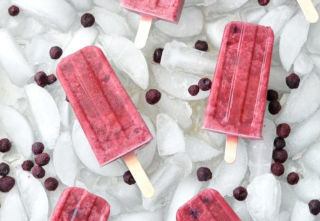 A special thanks to Courtney Hamilton at Paleohacks.com for today’s keto recipe roundup.
A special thanks to Courtney Hamilton at Paleohacks.com for today’s keto recipe roundup.
Popsicles, ice cream, and icy drinks—did you say goodbye to all these summer treats when you embarked on a keto diet? Well, with these recipes, you can have your frozen goodie and fuel ketosis, too.
These low-carb frozen keto treats include everything that’s great about an icy-cool dessert, but cut out all the sugar, additives, and excess carbs.
Enjoy simple 3-ingredient chocolate Popsicles, or jazz them up with a chocolate drizzle and a sprinkle of sea salt.
Cool down with gorgeously swirly coconut milk Popsicles sweetened naturally with blueberries, lime juice, and mint. If you’re a chocolate lover, try an amazingly fudgy Popsicle or a no-churn ice cream.
Get ready to cool down this summer with your favorite frosty keto treat!
PaleoHacks | Copycat Starbucks Keto White Drink
Drive up to this healthy homemade version of a Starbucks classic when you blend wholesome ingredients like peach white tea, coconut cream, and vanilla extract with a cup of ice.

Ketogasm | Keto Popsicles with Coconut Milk
Coconut milk and blueberries swirl together with lime juice and mint for a beautifully sophisticated pop.

PaleoHacks | Keto Chocolate Frosty
You’ll still have to choose between straw and a spoon when you cozy up to this thick and chocolatey favorite.
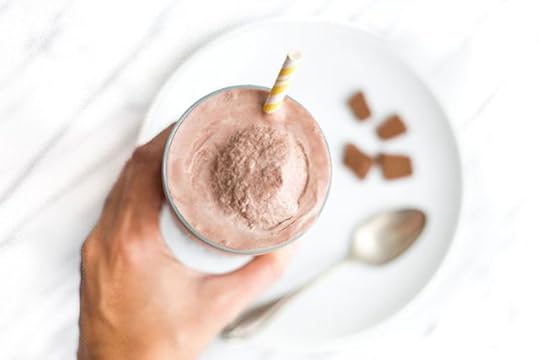
Sugar-Free Mom | Keto Strawberry Fudge Popsicles
Think of chocolate-covered strawberries, only frozen and on a stick!
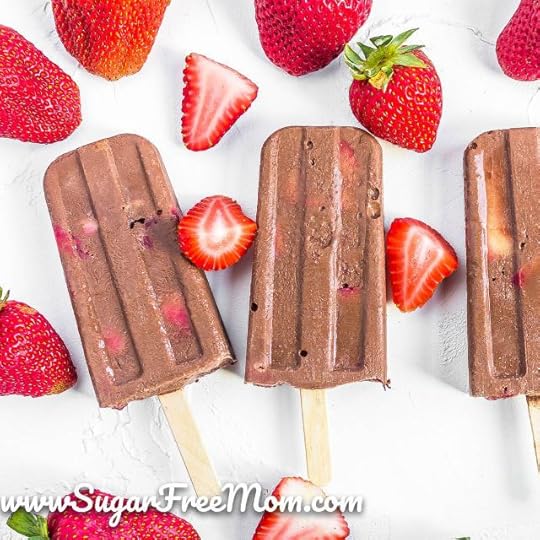
What Great Grandma Ate | Creamy Keto Fudgesicles
It’s a rich and creamy take on a classic, but without all the sugar.
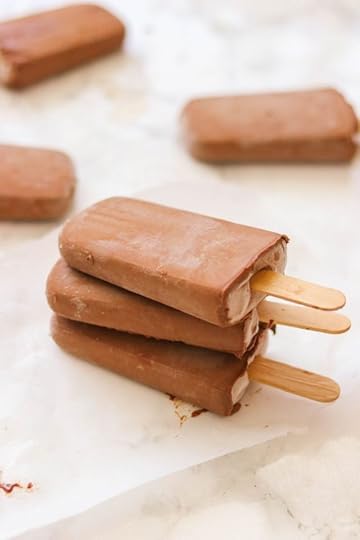
Healthy Little Peach | Strawberry and Cream Popsicles
You only need a handful of ingredients, a blender, and a Popsicle mold to whip up these icy cold treats.

The Big Man’s World | 3-Ingredient Keto Vanilla Ice Cream
Do you have a can of coconut milk, some cashew butter, and vanilla stevia? Then you can enjoy this easy-peasy, no-churn ice cream.

Gnom-Gnom | 3-Ingredient Paleo and Keto Chocolate Popsicles
We love the plain chocolate version, but you can jazz things up with a dark chocolate drizzle, toasted nuts, or a touch of espresso powder.
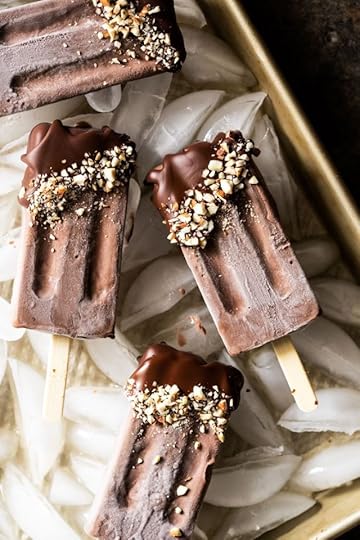
Sugar-Free Mom | Keto Butter Pecan Ice Cream
Use an ice cream maker to get this classic flavor as fluffy and pure as the original.

Peace Love and Low Carb | Mixed Berry Coconut Creamsicles
It’s like your favorite fruit salad, mixed with cream and popped onto a stick.

Gnom-Gnom | No Churn Paleo and Keto Vanilla Ice Cream
Your ice cream scooper will be begging to dig into this full-fat, uber-creamy treat.

Beaming Baker | 4-Ingredient Almond Butter Ice Cream
We love a tasty spoonful of almond butter, but it’s infinitely better when blended with coconut cream and stashed in the freezer for awhile.
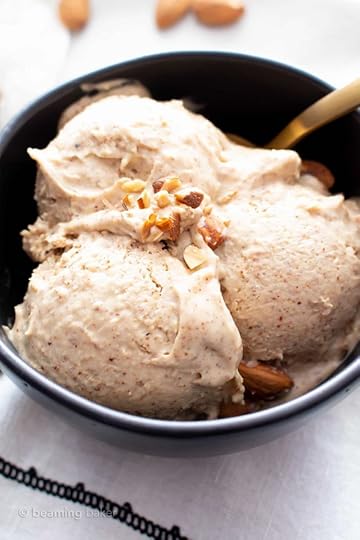
I Breathe I’m Hungry | No Churn Keto Chocolate Ice Cream
Whipped egg whites are the secret behind this intensely indulgent treat.

Thanks again to Courtney Hamilton from Paleohacks.com. Interested in seeing a certain recipe or roundup of a certain category—Primal or Primal-keto? Let us know below!

The post 13 Keto Frozen Treats appeared first on Mark's Daily Apple.



July 31, 2019
10 Keto Hacks to Try…Or Not
 When I say “hack” or “biohack,” what does that call to mind for you? Taking 20 supplements per day, shining special lights into your ears, stem cell injections? Simpler things like wearing blue light blocking glasses or turning your shower to cold for 30 seconds?
When I say “hack” or “biohack,” what does that call to mind for you? Taking 20 supplements per day, shining special lights into your ears, stem cell injections? Simpler things like wearing blue light blocking glasses or turning your shower to cold for 30 seconds?
The term has become ubiquitous in modern parlance, to the point where its meaning has become blurred. On the one hand, hacking can be about optimizing—taking your health and fitness to the next level once you have the basics dialed in, or adopting strategies aimed at living well over 100. On the other hand, a hack can also be a shortcut or trick designed to reap certain benefits without putting in the usual work. (Whether that’s a clever maneuver or a form of “cheating” depends on the context and whom you ask.)
Since the keto diet has reached such massive popularity, there’s also great interest in hacking keto. This probably isn’t surprising since a keto diet is more restrictive than other ways of eating. Any tactic that might make it easier would therefore be welcome. Also, there’s a lot of hype surrounding the keto diet right now. Yes, it will naturally attract people who aim to optimize their health and who want to squeeze the greatest possible effects out of keto. And…occasionally it may attract people who are looking for a quick fix rather than a long-term solution. Some will assuredly be set up for disappointment when it turns out that keto isn’t a panacea. Results aren’t always forthcoming on people’s desired timeline, so they look for tricks to kick it into high gear.
As you’d expect, then, there are lots of resources promoting “keto hacks.” Most of these turn out to be basic common sense tips for any diet: set realistic goals, plan your meals, know how to read ingredient lists, find an accountability partner. This is all great advice, but it’s not about keto per se. Likewise, a lot of so-called keto hacks are just the Primal Blueprint Laws: move a lot (don’t be sedentary), lift heavy things, avoid sketchy oils, sleep. Everyone should be doing those things, keto or not.
In my view, a keto hack is a strategy that goes beyond the basics of ketogenic eating (i.e., drop carbs and increase fat) to do one of the following:
Get you into ketosis quickly
Make a keto diet easier and/or more enjoyable
Enhance the effects of ketosis and/or increase ketone levels
Mimic or achieve ketosis without having to strictly restrict dietary carbs
Let’s look at 10 common keto hacks and see how well they jibe with the Keto Reset and Primal approaches.
1. Ingredient Swaps
This one is the most basic, aimed at making keto easier and more enjoyable by taking higher-carbs foods you already know and love and swapping in keto-friendlier ingredients. Think zoodles with pesto and parmesan, almond flour mug bread, cauliflower rice in everything.
This also includes swapping traditional sugars/sweeteners for things like stevia and monk fruit. I’m on the fence regarding the sweeteners. If using keto sweeteners judiciously makes keto sustainable for you, they’re fine in moderation. (Search MDA for articles about the pros and cons of specific options.) However, if they keep your sweet tooth raging and your cravings high, they’re not worth it.
Verdict: Definitely, but be mindful about using keto-friendly sweeteners.
2. Manipulating Your Macros
Once you have the hang of eating basic keto macros, you can choose to strategically manipulate your intake of fat, protein, and carbs. You might want to do this if there’s still room for improving how you feel day-to-day or if you want to make faster progress toward your goals. Dropping dietary fat to lose body fat is one of the advanced strategies described in The Keto Reset Diet. If you’re struggling with hunger, changing your ratio of fat:protein might help. Experimenting with a cyclical or targeted keto approach falls into this category as well.
Verdict: Yes! The Primal+keto approach encourages self-experimentation and finding your personal “sweet spot.”
3. Going Carnivore
More and more people are starting with keto and moving on to carnivore nowadays. For some people it’s about the simplicity—eat meat, don’t eat other foods, done. Other people use carnivore as the ultimate elimination diet because they are desperate to solve the mysteries of their gut or other health issues that paleo/Primal/AIP/keto couldn’t fix.
The jury is still out on whether the carnivore diet is safe long term. As with keto, it surely depends on how you implement it. Are you truly eating nose to tail—organs, skin, blood, glands? That’s very different than only eating ground beef and ribeye. Personally, I doubt that it’s optimal compared to a diet that is at least somewhat omnivorous, but we need more data. Furthermore, I haven’t seen evidence that it’s superior health-wise to Primal+keto for the general population. Of course, if it profoundly changes an individual’s health for the better, that’s a different story.
Verdict: As a short-term experiment, sure. As a long-term diet, I’d need a good reason. (Not wanting to make a salad wouldn’t be good enough for me.)
4. Measuring Ketones and/or Blood Glucose
This falls into the category of self-quantification—not exactly a hack so much as a tool that biohackers use to track how their bodies respond to different stimuli. For individuals who are dealing with medical issues for which blood sugar regulation or ketone levels are important, measuring is a must. For the rest of us, tracking can be a useful tool, especially to see how these markers are affected by specific foods or quantities of foods. Some people simply like gathering data, and that’s cool too.
Just remember that higher ketone levels are not in and of themselves the goal (except in specific medical situations). Ketone and blood glucose levels do not directly predict weight loss or other outcomes, although they can give you some clues about what’s going on in your body.
Verdict: A useful tool for learning about your body, but not necessary if you’re doing keto for general wellness or weight loss. Subjective measures often suffice.
5. Incorporating MCT Oil
Medium-chain triglycerides (MCTs) can be especially useful for supporting a keto diet and are traditionally used in keto fatty coffee recipes. MCTs are digested differently from other fats, going directly to the liver where they can be converted into ketones. The increased ketone production is probably why some people report experiencing greater mental clarity or appetite suppression when they incorporate MCT oil into their diets. Research also suggests that MCTs increase the thermic effect of food and promote greater body fat loss, a benefit to those hoping to lose weight with keto. They might also positively affect gut health.
Because MCTs can raise ketones even when consumed alongside high-carb foods, using MCTs might allow you to still reap some of the benefits of ketosis on higher-carb days. MCTs can also be used alongside intermittent fasting to enhance ketone production and stave off hunger. (Mark’s official decree about whether MCT oil breaks a fast: “technically yes, but realistically no—and it may even enhance your fasting experience when consumed in moderation.”)
On the other hand, an over-reliance on fatty coffee can crowd out more nutrient-dense breakfast options, and MCTs are still calories (though energy efficient ones). If your weight loss stalls, and you’re consuming a lot of MCT oil, that might be the problem. It’s possible to have too much of a good thing.
Verdict: Thumbs up! Start slowly because MCTs can lead to disaster pants if you’re unaccustomed to using them.
6. Taking Exogenous Ketones
Commercially available ketone salts or ketone esters can be used to raise blood ketones above the levels that are typically achievable with diet alone. They are somewhat controversial in the keto diet world, at least in the corner that we inhabit with the Keto Reset. However, I think the research into their possible applications for medicine, sport, and cognitive performance is intriguing.
I’m less enthusiastic about exogenous ketones as a weight-loss supplement. Yes, exogenous ketones can support a ketogenic diet by suppressing appetite, increasing energy, and being used to extend fasting. They do not, however, cause fat burning and weight loss, which is often how they are portrayed to consumers.
Verdict: Unnecessary and expensive. If you have the funds and want to experiment, by all means do so, but check out Mark’s take on exogenous ketones before you buy.
7. Intermittent Fasting
Keto folks love intermittent fasting. Eating in a compressed window during the day makes it easier to control caloric intake and regulate insulin production over a 24-hour period. Some people notice marked improvements in gut health by giving their guts a break from digesting food all the time. As with MCTs and exogenous ketones, intermittent fasting can “make up” for the effects of a somewhat higher-carb diet, allowing you to loosen the reins on the carb restriction a bit and still be in ketosis some of the time.
Many people also find that they naturally slip into a compressed eating window once the appetite suppressing effects of keto start to kick in. In The Keto Reset Diet, Mark recommends starting by delaying the first meal of the day until hunger ensues naturally. This is a gentle way to introduce intermittent fasting.
There are important cautions here though. Women need to be more mindful about fasting and caloric restriction than men, as do high-volume athletes. Intermittent fasting can be stressful on the body, so if you are already under a lot of stress from work, family, health issues, poor sleep, or heavy training load, now is not the time to start.
Verdict: Yes! Start by building a foundation of fat-adaptation first through Primal and ketogenic eating.
8. Fat Fasts, Egg Fasts, Etc.
None of these strategies is actually fasting for the record. They’re very-low-carb eating plans that allow a very limited range of foods. Usually they’re aimed at breaking through a weight loss plateau. If they work, it’s likely due to caloric restriction (it’s boring to eat a lot of the same food all the time). Otherwise, the purported benefits are the same as the regular ol’ keto diet: reduced appetite, increased satiety, and insulin regulation.
To me, these don’t pass the sniff test of “optimizing health.” Indeed, if you look at the “rules” for any of these, there are always myriad warnings about not doing them for more than a few days, if you have certain medical conditions, or if you are already low body fat. You can break through weight loss plateaus with other methods and still get plenty of nutrients.
Verdict: No thanks.
9. Fasted Exercise
This is another of the advanced strategies in The Keto Reset Diet, meaning it should only be undertaken once you have acclimated to the keto diet. Mark recommends working out fasted to help accelerate the process of fat- and keto- adaptation and to promote mitochondrial biogenesis and autophagy. Research has also shown that fasted exercise can improve insulin sensitivity, fat-burning, and endurance.
Note that while it can yield beneficial hormonal and metabolic effects (and is probably useful for endurance athletes), training fasted might not be optimal for people looking for muscle gains. Also, fasting can increase the stress of a workout, so if you already struggle with excess stress or cortisol, this strategy is probably not for you.
Verdict: Yes, once you are fat- and keto-adapted. You need not conduct all workouts fasted to reap the benefits.
10. Sprinting
Mark just wrote a very comprehensive two-part series on sprinting (Part 1, Part 2), so I won’t rehash it all here. Suffice it to say sprinting has tremendous adaptive hormonal effects, and it upregulates fat-burning, which all keto folks want. Sprinting can help deplete glycogen stores and get you into a state of ketosis faster. On the flip side, sprinting in a somewhat glycogen-depleted state (as keto folks generally are) enhances the benefits.
You can adapt sprinting to different fitness levels and physical abilities, so don’t avoid sprinting just because you’re not a runner. If you’re stalled out on your weight loss or fitness goals with your current diet and exercise routine, or if you want to take your fitness to the next level, throwing in the (healthy) stress of sprinting might be just the ticket.
Verdict: Go for it!
Final Thoughts: Use Your Brain (AKA Primal Blueprint Law #9: Avoid Stupid Mistakes)
I feel it’s important to mention that you can be successful and happy with a keto approach that involves none of these hacks. Also, of course, some of these might be inappropriate for your unique situation. With any hacks, understand why you are doing them, as well as the possible benefits and downsides. Don’t try something just because you saw it on YouTube or heard about it from your neighbor if it doesn’t feel right to you.
Most of all, don’t get sucked into the “keto harder” mentality where you just keep pushing and pushing your body to achieve better/faster results to the point where you go way past what is healthy or necessary for you. Be mindful about keeping self-imposed stressors in the “adaptive” category, and don’t compare your journey to others’.
Do you practice any of these? Do you have questions on other keto “hacks” you’ve heard about? Share your thoughts below, and thanks for stopping in today.

The post 10 Keto Hacks to Try…Or Not appeared first on Mark's Daily Apple.



July 30, 2019
Dear Mark: Safe Tick Repellent, Fish Intake on Mediterranean Diet, and Therapeutic Value of Wine
 For today’s edition of Dear Mark, I’m answering a few questions from recent comment boards. First, with all the scary tick-related news coming out lately, are there any non-toxic tick repellents that actually work? Are there essential oils that repel and/or kill ticks? Is there a safer way to use insecticides? Next, were the people in the Mediterranean keto study actually eating a kilo of fish on their fish days? And is the wine an important part of the Mediterranean diet? Is the wine therapeutic or just for pleasure?
For today’s edition of Dear Mark, I’m answering a few questions from recent comment boards. First, with all the scary tick-related news coming out lately, are there any non-toxic tick repellents that actually work? Are there essential oils that repel and/or kill ticks? Is there a safer way to use insecticides? Next, were the people in the Mediterranean keto study actually eating a kilo of fish on their fish days? And is the wine an important part of the Mediterranean diet? Is the wine therapeutic or just for pleasure?
Let’s find out:
Non toxic effective tick repellents safe for children? Any suggestions? I live in NC so the tick thing scares the hell out of me. Found at parks in short grasses, like how am I supposed to avoid this???
If you want to avoid DEET and other pesticides, there are many essential oils that repel ticks. Let’s go through the various tick species.
The castor bean tick:
Repelled by miswak essential oil and killed by Libyan rosemary essential oil.
Repelled by rosemary and mint essential oils.
Repelled by Dorado azul, also known as pignut or bushmint and traditionally used as mosquito repellent. The terpene known as alpha-humulene was the most repellent terpene found in the oil; you can buy both the oil and the humelene.
Repelled by turmeric oil, even beating out DEET.
The cattle tick:
Repelled by French marigold essential oil.
Repelled by mastrante essential oil.
The deer tick:
Repelled by nootkatone (a grapefruit aromatic compound) and to a lesser degree ECOSMART organic insect repellent. Here’s a cool video showing ticks trying to climb a person’s finger that’s been dipped in nootkatone.
Nothing is 100% guaranteed to repel all ticks. In fact, many of these oils show 50-60% effectiveness in the field. But if you use a combination of relevant essential oils, frequent tick checking, smart clothing choices (long socks, shoes/boots, pants), and avoidance of tick-heavy landscapes (tall grass, oak leaves, etc, notwithstanding these new breeds that apparently love short grass), you’ll be in good hands—or at least better hands than the naked guy rolling around in piles of oak leaves.
And if you’re really worried, you could always tuck pants into your shoes, then spray the shoes and lower section of your pants with peremethrin, an insecticide that kills the ticks as they climb before they can reach your flesh. Use a dedicated pair of pants and shoes that you don’t use for anything else and reapply each time you go out. A light spray on the outside of reasonably-thick pants should provide tick protection without actually putting the pesticide into contact with your skin.
2.2 pounds of fish each day?!
I know, I was surprised to read that myself. But right there, according to the researchers:
We estimated during the first 4 weeks of this study that the average edible fish consumption per subject during the ‘‘fish block’’ day was approximately 1.12 0.41 kg=day.
So it wasn’t just an allowance of fish. They actually tracked their consumption and found they were eating over 2 pounds of fish on average on the days they ate fish.
The study said that they had “fish block” and “no fish block” days. With no mix of fish and other meats on the same day. What is the reason for this?
They offered no justification in the study write-up.
Maybe it was to increase variety.
Maybe it was to reduce their intake of omega-3s. I mean, a kilo of fish per day adds up to a lot of omega-3s, especially if you’re doing sardines and salmon. There is such a thing as too much a good thing, and excessive omega-3 can lead to blood thinning, excessive bleeding, and imbalanced omega-3:omega-6 ratios in the opposite direction.
Maybe it was to help people stick to the diet, to break up all that fish with some meat and chicken.
Great, but why the wine? Is it not a contradictory with ketosis? But is it for pleasure or is it for a therapeutic reason?
Wine is emphasized in Mediterranean diet studies (both keto and regular) because wine is considered an important part of the cuisines of most Mediterranean countries, at least on the European side. Italy, France, Spain, Portugal, and Greece all have an extensive history of wine production and consumption. Since researchers are casting a wide net to capture everything that might be contributing to the health effects, they’re including everything that appears in the “Mediterranean diet.”
It’s good to keep in mind that ketosis and alcohol detoxification do utilize some of the same physiological pathways. If you’re drinking an excessive amount, you’ll run the risk of inhibiting ketone production.
Still, wine does appear to have therapeutic effects, especially in people with metabolic syndrome—the subjects of this study.
Red wine is very high in polyphenols, due to both the polyphenols in grapes themselves and the unique polyphenols that form during fermentation. One study compared grape extract to red wine made with the same types of grapes, finding that red wine provided benefits the grape extract did not.
Drinking wine with a fast food meal can reduce postprandial oxidative stress and inflammatory gene expression; it can actually make an otherwise unhealthy meal full of refined, rancid fats less damaging (though still not advisable).
Blood pressure: In people with (but not without) a genetic propensity toward efficient or “fast” alcohol metabolism, drinking red wine at dinner seems to lower blood pressure.
Type 2 diabetics: Type 2 diabetics who initiate red wine drinking at dinner see reduced signs of metabolic syndrome, including moderately improved glycemic control and blood lipids.
Inflammation: A study found that non-drinkers who begin regularly drinking moderate amounts of Sicilian red wine enjoy reduced inflammatory markers and improved blood lipids.
I’d say the wine is a therapeutic addition to the Mediterranean keto diet. Don’t let that override your own experience, however. Wine might have therapeutic effects for many people, but not everyone feels better including it. It’s an option, but it’s hardly a necessary one for a healthy diet.
If you have any more questions, feel free to ask away down below. Thanks for reading, everyone.

References:
El-seedi HR, Khalil NS, Azeem M, et al. Chemical composition and repellency of essential oils from four medicinal plants against Ixodes ricinus nymphs (Acari: Ixodidae). J Med Entomol. 2012;49(5):1067-75.
Ashitani T, Garboui SS, Schubert F, et al. Activity studies of sesquiterpene oxides and sulfides from the plant Hyptis suaveolens (Lamiaceae) and its repellency on Ixodes ricinus (Acari: Ixodidae). Exp Appl Acarol. 2015;67(4):595-606.
Goode P, Ellse L, Wall R. Preventing tick attachment to dogs using essential oils. Ticks Tick Borne Dis. 2018;9(4):921-926.
Politi FAS, Fantatto RR, Da silva AA, et al. Evaluation of Tagetes patula (Asteraceae) as an ecological alternative in the search for natural control of the cattle tick Rhipicephalus (Boophilus) microplus (Acari: Ixodidae). Exp Appl Acarol. 2019;77(4):601-618.
Lima Ada S, Carvalho JF, Peixoto MG, Blank AF, Borges LM, Costa junior LM. Assessment of the repellent effect of Lippia alba essential oil and major monoterpenes on the cattle tick Rhipicephalus microplus. Med Vet Entomol. 2016;30(1):73-7.
Schulze TL, Jordan RA, Dolan MC. Experimental use of two standard tick collection methods to evaluate the relative effectiveness of several plant-derived and synthetic repellents against Ixodes scapularis and Amblyomma americanum (Acari: Ixodidae). J Econ Entomol. 2011;104(6):2062-7.
Hansen AS, Marckmann P, Dragsted LO, Finné nielsen IL, Nielsen SE, Grønbaek M. Effect of red wine and red grape extract on blood lipids, haemostatic factors, and other risk factors for cardiovascular disease. Eur J Clin Nutr. 2005;59(3):449-55.
Di renzo L, Carraro A, Valente R, Iacopino L, Colica C, De lorenzo A. Intake of red wine in different meals modulates oxidized LDL level, oxidative and inflammatory gene expression in healthy people: a randomized crossover trial. Oxid Med Cell Longev. 2014;2014:681318.
Gepner Y, Henkin Y, Schwarzfuchs D, et al. Differential Effect of Initiating Moderate Red Wine Consumption on 24-h Blood Pressure by Alcohol Dehydrogenase Genotypes: Randomized Trial in Type 2 Diabetes. Am J Hypertens. 2016;29(4):476-83.
Gepner Y, Golan R, Harman-boehm I, et al. Effects of Initiating Moderate Alcohol Intake on Cardiometabolic Risk in Adults With Type 2 Diabetes: A 2-Year Randomized, Controlled Trial. Ann Intern Med. 2015;163(8):569-79.
Avellone G, Di garbo V, Campisi D, et al. Effects of moderate Sicilian red wine consumption on inflammatory biomarkers of atherosclerosis. Eur J Clin Nutr. 2006;60(1):41-7.
The post Dear Mark: Safe Tick Repellent, Fish Intake on Mediterranean Diet, and Therapeutic Value of Wine appeared first on Mark's Daily Apple.



July 29, 2019
Primal + Keto Cooking Made Easy: Collard Green Tuna Wraps
 If you’re looking for a quick keto-friendly lunch, look no further. In less than ten minutes, you can throw together these tuna wraps using one of our favorite greens for all your wrap needs—collard green leaves. A bit of Primal-friendly mayo, some veggies, and a bit of fresh lemon juice give plenty of creamy flavor to this easy (and economical) meal you can grab and go with.
If you’re looking for a quick keto-friendly lunch, look no further. In less than ten minutes, you can throw together these tuna wraps using one of our favorite greens for all your wrap needs—collard green leaves. A bit of Primal-friendly mayo, some veggies, and a bit of fresh lemon juice give plenty of creamy flavor to this easy (and economical) meal you can grab and go with.
Check it out….
?
Collard Green Tuna Wraps
Servings: 12 wraps
Time In the Kitchen: 10 minutes
Ingredients:
2 collard leaves
1 tin of tuna
2 Tbsp. Primal Kitchen Mayo (your favorite flavor)
Salt and pepper to taste
2 squeezes fresh lemon juice
1/4 cup cucumber (cut into matchstick shape)
1/4 cup shredded carrots
1/8 cup radish (cut into matchstick shape)
1/4 avocado (in slices)
Instructions:
Wash and dry collard leaves. Use a paring knife to cut the stems.
In a small bowl, combine tuna with mayo, salt and pepper, and lemon juice. Mix well.
Place collard leaves on a flat surface (1 large leaf per wrap). Top each leaf with tuna mixture and veggies, placing all ingredients on one end of the leaf.
Wrap up it up like you would a burrito—fold the leaf over top of the mixture and keep rolling, tucking both sides in as you roll. Cut the wrap in half. (You can use a toothpick to secure if desired.) Repeat the process with the other wrap. Enjoy!
Nutrition Information (1 wrap):
Calories: 244
Total Carbs: 5.7 grams
Net Carbs: 24.5 grams
Fat: 18 grams
Protein: 18 grams


The post Primal + Keto Cooking Made Easy: Collard Green Tuna Wraps appeared first on Mark's Daily Apple.



July 28, 2019
Honey Mustard Pork Tenderloin with Bacon Broccoli Salad
 Today we’re serving up a Primal+keto dinner you’ll put on the regular rotation for its flavor and ease: succulent pork tenderloin, made juicier and richer with a honey mustard marinade alongside a cool, crunchy broccoli salad with celery, radishes macadamia nuts and bacon.
Today we’re serving up a Primal+keto dinner you’ll put on the regular rotation for its flavor and ease: succulent pork tenderloin, made juicier and richer with a honey mustard marinade alongside a cool, crunchy broccoli salad with celery, radishes macadamia nuts and bacon.
Customize with your favorite marinade flavors as well as your veggies, nuts or seeds of choice. Midweek meals just got more delicious….
Servings: 3
Prep Time: 20 minutes
Cook Time: 30 minutes
Ingredients:
Pork:
12 oz. Pork Tenderloin
6 Tbsp. Primal Kitchen® Honey Mustard Marinade
3 cloves Garlic, grated
1/2 Tbsp. Chopped Rosemary
1 tsp. Thyme
Pinch of Salt and Pepper
Broccoli Salad:
4 slices Bacon
3 cups chopped Broccoli Florets
2.5 Tbsp. Primal Kitchen Garlic Aioli Mayo
1 Tbsp. Bacon Fat
1/2 Tbsp. Lemon Juice
3 Tbsp. Macadamia Nuts
2 Tbsp. diced Red Onion
1/2 cup Radishes, cut into matchsticks
1/4 cup diced Celery
Instructions:

Preheat the oven to 375 degrees Fahrenheit. Once hot, place a seasoned and lightly oiled cast iron pan in the oven for 15-20 minutes until it is hot.
In a bowl, combine the Primal Kitchen Honey Mustard Dressing and Marinade, garlic, rosemary, and thyme. Taste the mixture and season accordingly with salt and pepper. Add the pork tenderloin and rub the marinade all over it. Allow the pork to marinate in the fridge for 15-30 minutes.
Once the pan is hot, set it over your stove top burner over medium-high heat. Lightly pat the pork dry with a paper towel and place the pork in the pan, making sure to slightly tuck the tail of the tenderloin under itself. Sear the pork for 2-3 minutes on each side, then place the pan into the oven. Remove the pork when it reaches your desired internal temperature, between 145-160 degrees. Spoon any extra juices from the pan over the pork and allow it to rest for 10-15 minutes before slicing.
(If you are preparing it on a grill, preheat one side of the grill over medium-high heat, and the other over low heat. Lightly oil the grill grate and pat the pork to remove any residual liquid. Place the pork on the side that’s set to medium-high heat and grill for 2-3 minutes on one side, then flip it over for an additional 2-3 minutes. Repeat this again and grill for an additional 1-3 minutes on each side, then transfer the pork to the side with the lower heat. Cover the grill and grill under the internal temperature reaches between 145-155 degrees. Since the tail is so much thinner than the rest of the tenderloin, slightly tuck the tail of the tenderloin under the rest of the pork when cooking to prevent the thinner end from overcooking and drying out.)

To make the broccoli salad, roast the bacon on a sheet pan at 375 degrees for about 20 minutes, or until it reaches the doneness of your liking. Roughly chop the bacon and set it aside. Reserve a tablespoon of the bacon fat for the next step.
Combine the Primal Kitchen Garlic Aioli Mayo with a tablespoon of bacon fat and the lemon juice. Toss the chopped broccoli with the mayo mixture and fold in the bacon, macadamia nuts, onions, radishes and celery. Season with salt and pepper to taste and serve with the pork tenderloin. Enjoy!
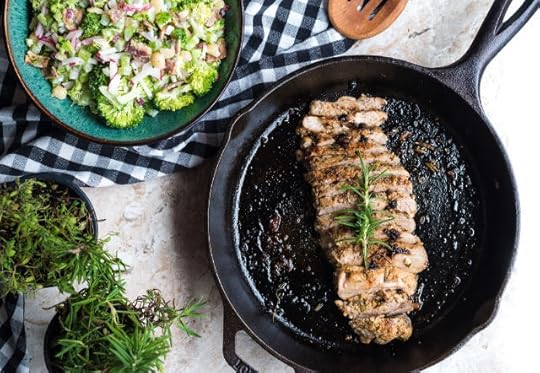
Nutrition Information (4 oz. Pork and 1/3 of Salad):
Calories: 506
Total Carbs: 12 grams
Net Carbs: 9 grams
Fat: 39 grams
Protein: 28 grams

The post Honey Mustard Pork Tenderloin with Bacon Broccoli Salad appeared first on Mark's Daily Apple.



July 26, 2019
Weekly Link Love — Edition 39

Research of the Week
For women, the smell of a newborn triggers a dopamine rush in brain reward centers.
Resistance training for older adults: a position statement.
Trees keep nearby stumps alive.
Early hominids breast fed as long as six years.
If you eat a standard American diet, nuts may help your nuts.
New Primal Blueprint Podcasts

Episode 359: Daniel J. Siegel MD: Host Elle Russ chats with Dr. Daniel J. Siegel about the power of mindful awareness.

Episode 360: Dr. Tommy Wood Setting Us Straight on Carnivore, Plant-Based, Testosterone, and the Quantified Self Movement: Host Brad Kearns chats with Dr. Tommy Wood.

Primal Health Coach Radio, Episode 19: Hosts Erin and Laura chat with Michelle Pfenninghaus about the importance of treating your business like a business.
Each week, select Mark’s Daily Apple blog posts are prepared as Primal Blueprint Podcasts. Need to catch up on reading, but don’t have the time? Prefer to listen to articles while on the go? Check out the new blog post podcasts below, and subscribe to the Primal Blueprint Podcast here so you never miss an episode.
Media, Schmedia
Interesting Blog Posts
How important are social relations for health?
How one man changed his blood lipids by adding in some targeted carbohydrate (while staying ketogenic).
Success Stories
Dean Brennan’s story.
Social Notes
Everything Else
The importance of harmony.
The Saudi Crown Prince’s vision of the future (involves robot Blood Sport competitions).
Will exogenous ketones be banned at the Tour de France?
Things I’m Up to and Interested In
Podcast I recently did: Discussing building a powerful personal brand and becoming a successful entrepreneur at any age with Lewis Howes.
Blog post I enjoyed: The one discussing what we know about Neu5Gc and heart disease in humans.
Article I found relevant: How to prevent and treat heat stroke.
Tick story I found terrible: Ticks successfully kill a cow by exsanguination.
This is a powerful story: The new human story.
Question I’m Asking
How important has social connection been in your life and health?
Recipe Corner
Kalbi, or Korean-style short ribs.
Tripe noodles.
Time Capsule
One year ago (Jul 21 – Jul 27)
Exercising While Keto: 11 Tips for the Transition (and Long Term) – How to improve your performance.
Interval Training for Beginners – Tips for those starting out.
Comment of the Week
“You know, I feel like I’ve heard a lot of sneering about dynamic tension. It’s nice to know those comic book ads from the 70s were right.”
– I attribute a lot of my success in life to the pair of X-ray specs I bought out the back of a Spiderman comic, Ion Freeman (itself a great comic book name).

The post Weekly Link Love — Edition 39 appeared first on Mark's Daily Apple.



July 25, 2019
15 Low-Carb, Keto-Friendly Desserts
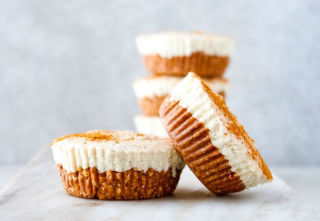 A special thanks to Courtney Hamilton at Paleohacks.com for today’s keto recipe roundup.
A special thanks to Courtney Hamilton at Paleohacks.com for today’s keto recipe roundup.
Yes, you can have desserts while on keto! These totally sugar-free and low-carb recipes prove that it’s not only possible, but also deliciously satisfying.
The trick to keto desserts is relying on healthy fats to provide richness while using low-carb sweeteners like monk fruit or stevia.
On this list, you’ll find a bevy of keto-approved dessert options, from fudgy brownies to dairy-free cheesecakes. Need a birthday cake recipe? We’ve got that covered. Craving candy? Try a keto and Paleo “PB&J” cup, no peanut butter necessary.
When a sweet craving strikes, these keto-friendly desserts are here to keep you on track.
#1 Our Paleo Life | Keto Chocolate Peppermint Fat Bombs
These candy-like treats are loaded with healthy fats from cocoa butter, coconut oil, coconut butter, and MCT oil.

#2 PaleoHacks | Keto Chocolate Avocado Brownies
We love these uber-rich, sugar-free brownies made possible with a healthy dose of creamy avocado.

#3 Paleo Running Momma | Fudgy Keto Brownies
If you’re not keen on avocado in your brownies, no worries. Try these impossibly rich, super-fudgy brownies instead.
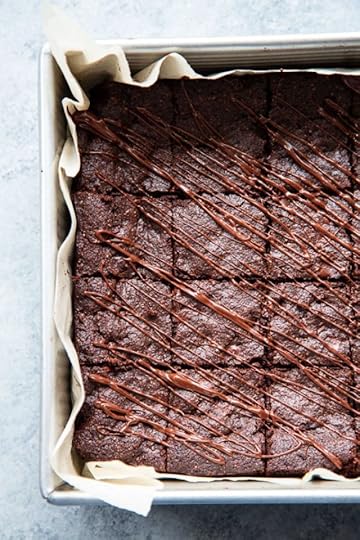
#4 PaleoHacks | Keto “PB&J” Cups
Nix the lectin-filled peanut butter and whip up these almond butter cups with a stevia-sweetened raspberry jelly.
#5 Healy Eats Real | Classic Vanilla Coconut Flour Cake
Need a keto birthday cake recipe? This classically indulgent vanilla cake stays fluffy and light with a keto buttercream frosting. Top with berries for a pop of keto-friendly color!
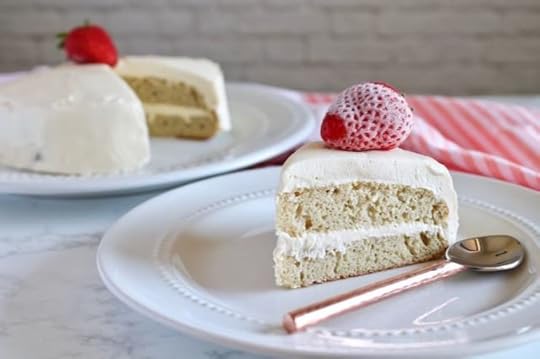
#6 PaleoHacks | Keto Chocolate Cloud Cookies
Whip up these fluffy cloud cookies to see the power of egg whites in action.

#7 Pretty Pies | Key Lime Parfaits
Why bake up a whole key lime pie when you can enjoy these no-bake, keto-friendly parfait cups instead?

#8 PaleoHacks | Strawberry Cashew Fat Bombs
Cashew butter and coconut butter are the creamy base of these fat bombs, made complete with freeze-dried strawberries and a dash of lemon juice.

#9 Food Faith Fitness | Whipped Shortbread Cookies
I can’t believe there’s no butter! These buttery keto shortbread cookies are made from dairy-free ghee.
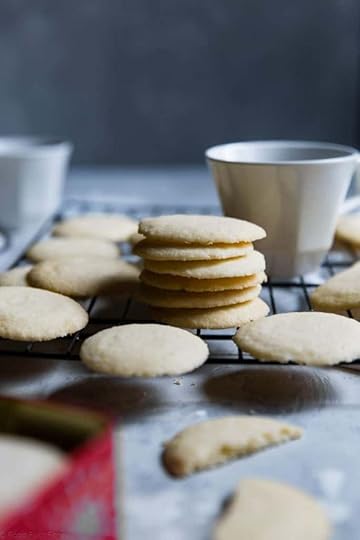
#10 PaleoHacks | Keto Almond Fruit Apricot Crumb Bars
If you’re a fan of apricots, you’ll love these healthy bars with a coconut cream layer and a crumbly almond flour topping.
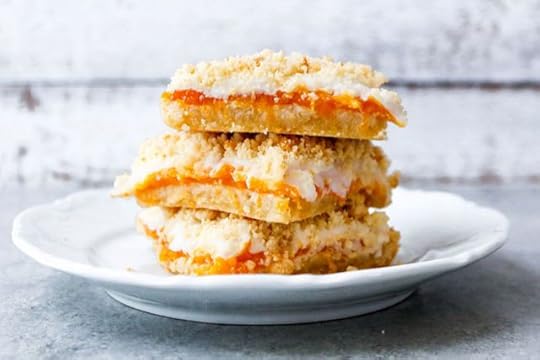
#11 The Big Man’s World | No Bake Salted Caramel Energy Balls
All you need is five minutes and five ingredients for these sunflower seed butter treats!
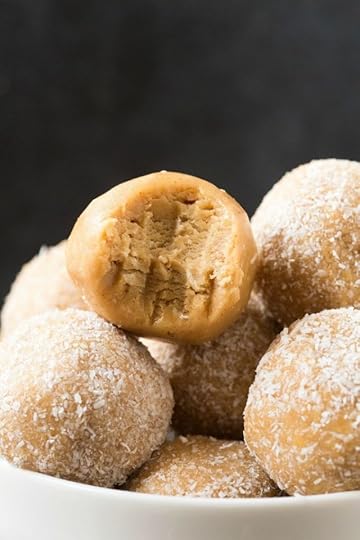
#12 PaleoHacks | Keto White Chocolate Truffles
While you can’t technically have white chocolate on keto, these sneaky truffles combine coconut butter and coconut cream to achieve a similar effect.

#13 PaleoHacks | Keto Eggnog Cheesecakes Made in a Muffin Tin
A simple almond-cinnamon crust sits at the bottom of these rich eggnog cheesecakes, made with coconut cream, nutmeg, and cashews.

#14 PaleoHacks | Slow Cooker Keto Blueberry Lemon Cake
Did you know you can make keto cake in a slow cooker? Yeah, that means you don’t have to turn your oven on!

#15 PaleoHacks | The Best Keto Chocolate Chip Cookies
If you’re a chocolate lover, you’re not going to want to miss these classic chocolate chip cookies.

Thanks again to Courtney Hamilton from Paleohacks.com. Interested in seeing a certain recipe or roundup of a certain category—Primal or Primal-keto? Let us know below!

The post 15 Low-Carb, Keto-Friendly Desserts appeared first on Mark's Daily Apple.



July 24, 2019
What is Mediterranean Keto?
 As I’ve written before, although most people’s lipid numbers improve across the board, some people get interesting cholesterol responses to Primal ketogenic diets. LDL skyrockets, even LDL particle number. The jury’s out on whether or not they indicate negative health concerns or if keto dieters are a special breed that hasn’t received enough study. (There may be a few genetic profiles, such as APOE4 carriers, that react differently to certain dietary inputs.) Either way some people just want their cholesterol numbers to look good in a conventional way. These days, whenever I run into someone in the real world with these or similar concerns, I tell them to try “Mediterranean keto.”
As I’ve written before, although most people’s lipid numbers improve across the board, some people get interesting cholesterol responses to Primal ketogenic diets. LDL skyrockets, even LDL particle number. The jury’s out on whether or not they indicate negative health concerns or if keto dieters are a special breed that hasn’t received enough study. (There may be a few genetic profiles, such as APOE4 carriers, that react differently to certain dietary inputs.) Either way some people just want their cholesterol numbers to look good in a conventional way. These days, whenever I run into someone in the real world with these or similar concerns, I tell them to try “Mediterranean keto.”
What is that, anyway?
The Mediterranean diet can mean a lot of different things depending on who you ask. On one side, you have the folks who make the ridiculous claim that the Mediterranean diet consisted of pasta, low-fat dairy, beans, green veggies, seed oils with a “drizzle or two” of extra virgin olive oil for good measure, a handfuls of nuts, and a single filet of sardine once every three days. They avoided salt and red meat and full-fat cheese, somehow ignoring the vast body of salt water on their shores and the large population of sheep and goats roaming the land. I guess that livestock is only there to keep the weeds down.
On the other side, you have the people claiming that the true Mediterranean diet consisted of fatty lamb, hard cheeses, fish filets dripping with oil, skins of homemade red wine, cured meats, endless olives, vegetables at will, and the occasional legume bathing in mutton juices and a tiny piece of bread crust submerged in extra virgin olive oil.
This is probably closer to the truth, but both are a bit hyperbolic.
It also depends on where you’re looking. The Mediterranean is a big sea. Spain, Italy, Portugal, Greece, Crete, Turkey, Morocco, Algeria, Israel, Lebanon, Egypt, and even France are all technically Mediterranean countries. Are their diets identical? No. Are there common threads running through their respective cuisines? Yes.
Olive oil
Fish
Wine (excepting Muslim dietary practices)
Cheese
Meat
Vegetables
Grains and legumes (Yes, they do eat beans and pasta and bread, although perhaps not in the quantities the grain-addicted would prefer)
And that’s not even mentioning all the various social, spiritual, and lifestyle components of the Mediterranean way of life. The sun, the walking, the hills, the family connections, the religious leanings. Today’s label is all about the diet.
The Mediterranean keto diet emphasizes olive oil, fish, cheese, meat, low-carb vegetables, and red wine. In other words, it takes all the keto-compliant foods readily available to denizens of the Mediterranean and constructs a nutrient-dense diet out of them.
And you know what? It seems to work really well.
In one of the most impressive studies, people with severe obesity and metabolic syndrome tried a Mediterranean keto diet for 12 weeks. That’s three months.
Here’s what the diet consisted of:
No calorie counting
Unlimited protein
Lots of fish. At least (and often more than) four days a week, subjects ate over a kilogram of fish each day, mostly sardines, trout, mackerel, and salmon. On the other days, they got their protein from shellfish, meat, fowl, eggs, and cheese.
Lots of omega-3s. Subjects were getting over 15 grams of omega-3s on their fish days and supplementing with 9 grams of salmon oil on their non-fish days.
At least 200-400 mL of red wine a day, 100-200 mL at lunch and dinner. That’s up to over half a bottle.
At least 30 mL (2 tablespoons) of olive oil a day, 10 mL per meal.
Maximum two portions of salad and one portion of low-carb vegetables (cauliflower, broccoli, eggplant, etc) per day.
A comprehensive vitamin and mineral supplement covering all the basics.
What happened to these subjects after 12 weeks on this Mediterranean keto diet regimen?
On average:
They lost 30+ pounds.
Their BMIs dropped from almost 37 to 31.5, from the middle of class 2 obesity to the bottom of class 1 obesity.
They lost 16 centimeters, or 6 inches, from their waist.
Fasting blood sugar dropped from 118 (pre-diabetic) to 91 (ideal).
Triglycerides dropped from 224 to 109.
HDL increased from 44 to 58.
They went from prehypertensive to normotensive.
Their liver enzymes and liver fat reduced and in some cases completely resolved.
All 22 subjects started the study with metabolic syndrome and ended it without metabolic syndrome.
That last bit is pretty interesting. Note that the majority of the participants were still obese (BMI over 30) by the end of the study, yet every single one had cured their metabolic syndrome. Sure, they lost weight, and the trend was fantastic and heading down, but they weren’t there yet. Something about the diet itself was incredibly powerful.
The only limitation? It was a pilot study, not a randomized controlled trial pitting the Mediterranean keto diet against a control diet in real time. But considering that these people were coming off control diets—which clearly weren’t working for them—and onto the Mediterranean keto diet, it has more real-world power than you might think. You can bet the participants weren’t complaining about a lack of placebo control.
I’m not saying this is the best incarnation of all the potential Mediterranean keto diets out there. But if you’re having mixed metabolic results from the keto diet and looking for a ketogenic option with more monounsaturated fat and omega-3s, it’s the one that has some clinical research behind it. It’s one that doesn’t possess any glaring red flags.
This is also a form of ketogenic dieting that most people will view as “healthy.” It can be hard to get people to accept that putting real cream in their coffee and steak on their plates is good for them, even if they’re approaching death’s door eating what they’ve always eaten. It’s not so hard to get people on board with a diet of olive oil, fish, red wine, and salad. That’s no small feature.
In the end, the ketogenic Mediterranean diet appears to be an effective way to treat metabolic syndrome without scaring people away. For that reason, it might be a good option to try if you’re having issues with cardiovascular markers, blood sugar, hypertension, body fat, or any of the components that make up the metabolic syndrome.
What do you think of the Mediterranean keto diet? Think you could stick to it?

References:
Pérez-guisado J, Muñoz-serrano A. A pilot study of the Spanish Ketogenic Mediterranean Diet: an effective therapy for the metabolic syndrome. J Med Food. 2011;14(7-8):681-7.
Pérez-guisado J, Muñoz-serrano A. The effect of the Spanish Ketogenic Mediterranean Diet on nonalcoholic fatty liver disease: a pilot study. J Med Food. 2011;14(7-8):677-80.
The post What is Mediterranean Keto? appeared first on Mark's Daily Apple.



July 23, 2019
Dear Mark: Collagen vs Whey Follow-Up
 For today’s edition of Dear Mark, I’m answering questions from last week’s Collagen vs Whey post. You guys had a lot of questions, mostly about collagen, and I’m here to answer them. Can collagen help with plantar fasciitis? Should you take collagen and whey together in the same smoothie, or do they cancel each other out? If a person can’t have whey, is there an equivalent protein powder source? Is glycine a good replacement for collagen? What about liquid whey from raw milk—how does it compare to powdered whey? If I wanted to get my glycine from foods, what would I need to eat and how much of it?
For today’s edition of Dear Mark, I’m answering questions from last week’s Collagen vs Whey post. You guys had a lot of questions, mostly about collagen, and I’m here to answer them. Can collagen help with plantar fasciitis? Should you take collagen and whey together in the same smoothie, or do they cancel each other out? If a person can’t have whey, is there an equivalent protein powder source? Is glycine a good replacement for collagen? What about liquid whey from raw milk—how does it compare to powdered whey? If I wanted to get my glycine from foods, what would I need to eat and how much of it?
Let’s find out:
Is there any evidence that collagen supplements can help with plantar fasciitis? Suffering from this recently and the stretching from MDA has helped but looking to get that last 10% of healing so there is no pain.
Fascia is basically pure collagen. If collagen supplementation has been shown to improve pain in other parts of the body made of collagen, like the knees or tendons, and improve collagen synthesis in collagenous tissues like skin and joints, I see no reason it shouldn’t also improve the fascia. Boosting collagen synthesis is boosting collagen synthesis, and supplemental collagen does it.
A good thing to try is eat 20-30 grams of collagen with 200 mg of vitamin C 30 minutes before a workout that you know targets your plantar fascia.
Hey Mark,
Is there any benefit to having them at the same time? Or do they cancel each other out?
I’m a big fan of stirring collagen into any foods I make that have sauce.
What about a 50/50 smoothie of whey and collagen?
Thanks for any insight!
I’m unaware of any unique benefit.
When you think about how collagen appears in the natural world, it’s usually alongside muscle meat.
Entire culinary traditions revolve around the consumption of collagen and muscle meat together. Think Vietnamese pho (bone broth and meat). Think French (reduced broth-based sauce poured over meat). Think Mexican (bone broth-infused rice served with meat). Hell, go all the way back to the Pleistocene and humans were boiling smashed bone fragments in stomach casings.
No reason to separate them.
It is possible for a person to be allergic to casein and I don’t think it’s possible to have fully casein free whey protein except maybe the isolate. However, if the person is allergic it wouldn’t be safe. What’s the next best complete protein if a person can’t use whey, and wants the convenience of a powder? I’ve seen beef protein before, but have no idea of the quality.
I’d say go for egg white protein. Extremely complete, tasteless, and blends seamlessly into anything.
Is it true that collagen doesn’t work/assimilate without vitamin C? I try to take mine with some cherries or lemons.
It seems to work better. The recent study that found pre-workout collagen improved tendons also included vitamin C.
I sometimes buy raw A2 milk from Jersey cows, and make my own whey. Wondering how that compares to powdered whey?
That’s awesome. The liquid whey will have a broader range of nutrients, but the powdered whey will be more concentrated and far higher in protein. Remember that whey protein is basically dehydrated liquid whey and you’ll get a picture of how much liquid whey goes into whey powder.
My interest in this has led me to start studying biology because I would like to know more about nutrition and digestion. Because the way that my nails changed seems incredible to me and it really makes me wonder what else collagen is doing.
You make a good point. I often use improvements in one area of health as assurance that other areas of health are also improving. I’m sure that’s not always true, but I think that’s a pretty safe assumption most of the time.
My question to you Mark would be to echo the same question others have posed, ie are there any downsides to me taking whey, collagen and glycine simultaneously in my pre-workout shake? Otherwise I have a real dilemma, as it appears that there is very good science to support having both collagen/ glycine as well as rapidly digested essential aminos (from whey) in your system before undertaking a ‘fasted’ workout.. A tough question I know but any insight you have would be much appreciated!
There’s no reason to avoid it. Do it. Should be good for both your connective tissue and your gains.
Would glycine supplements have a similar effect as collagen? Glycine supplementation would be way less expensive than collagen:
• 30 grams of collagen (=~10 grams glycine) from Great Lakes = 5 tablespoons, costs =~$1.13 if you buy the 8 pound bag.
• 10 grams of glycine from Bulk Supplements =~$0.18 if you buy the 5 kilogram bag.
Pure glycine is great for things like balancing your intake of methionine. As I wrote in the original post, muscle meat is high in an amino acid called methionine. Methionine metabolism depletes glycine, so the more meat you eat, the more glycine-rich connective tissue, bone broth, and collagen supplements you should be eating to balance out the amino acids. This is the basic foundation for eating all that collagen I recommend.
But balancing methionine for longevity and health isn’t the only reason we’re eating collagen. Collagen is the most abundant protein in the body, providing tensile strength to our bones, teeth, ligaments, tendons, and cartilage. It’s an important structural component of the skin, lungs, intestines, and heart. And as far as the evidence so far available suggests, eating the amino acids that make up collagen separately doesn’t have the same effect on those collagenous tissues as eating them together in a collagenous matrix.
In one study, rats with osteoporosis ate collagen hydrolysate that scientists had marked with a radioactive signature to allow them to track its course through the body. It survived the digestive tract intact, made it into the blood, and accumulated in the kidneys. By day 14, the rats’ thigh bones had gotten stronger and denser with more organic matter and less water content.
Another study found similar results, this time for cartilage of the knee. Mice who ate radioactive collagen hydrolysate showed increased radioactivity in the knee joint.
When you feed people collagen derived from pork skin, chicken feet, and cartilage, many different collagenous peptides appear in the blood. You don’t get any of those from isolated glycine.
All that said, pure glycine can be a helpful supplement. As mentioned, it’s great for balancing out methionine intake from muscle meat consumption. It’s also been used in several studies to improve multiple markers of sleep quality. And glycine is probably the most important component, if you had to choose just one, of collagen.
Collagen is ideal, but glycine isn’t a bad option. In fact, I’d argue that perhaps collagen plus supplementary glycine could offer the best bang for your buck.
Mark, can you please do a post examining the different amounts of glycine in actual foods, i.e. pork rinds, chicken skin, connective tissue rich cuts of meats, etc? I’d really like to get my collagen and glycine from food sources and know how much of the foods I would have to eat in order to get the 10g you mention.
I’ll do a quick answer.
An ounce of pork rinds gives you 3.38 grams of glycine.
An ounce of roasted chicken skin gives you 1 gram of glycine.
A pork tail of about 4 ounces will give you almost 3 grams of glycine. Oxtail should be about the same.
So getting your glycine from food alone is entirely doable, but you’ll probably have an easier time if you like chicharrones/pork rinds and animal tails. There are some higher quality pork rinds out there these days, like the Epic brand ones.
Hi Mark – thank you for all of your great information!!!
I make homemade Greek yogurt at home – I strain it in a fine mesh strainer and get an incredible about if whey as a result. I generally mix about 1/4 cup back into the yogurt to get the right consistency. I throw the rest out. Is this consumable as whey for the diet?
It is consumable. But keep in mind that liquid whey isn’t as protein-dense as whey powder. It’s still good to eat and a great source of probiotics.
Thanks for your questions, everyone. Take care!

References:
Figueres juher T, Basés pérez E. [An overview of the beneficial effects of hydrolysed collagen intake on joint and bone health and on skin ageing]. Nutr Hosp. 2015;32 Suppl 1:62-6.
Shaw G, Lee-barthel A, Ross ML, Wang B, Baar K. Vitamin C-enriched gelatin supplementation before intermittent activity augments collagen synthesis. Am J Clin Nutr. 2017;105(1):136-143.
The post Dear Mark: Collagen vs Whey Follow-Up appeared first on Mark's Daily Apple.



July 22, 2019
Primal + Keto Cooking Made Easy: Compound Butter
 As Mark has always said, the key to great food is the sauces and seasonings. This simple and versatile compound butter is yet another way you can add more flavor and richness to just about any Primal or keto meal you make. Fresh herbs add a bright taste and butter lends a smooth richness to everything from roasted vegetables to hearty omelettes to varied fish and meat dishes. Use your favorite herbs for the perfect taste you’ll enjoy!
As Mark has always said, the key to great food is the sauces and seasonings. This simple and versatile compound butter is yet another way you can add more flavor and richness to just about any Primal or keto meal you make. Fresh herbs add a bright taste and butter lends a smooth richness to everything from roasted vegetables to hearty omelettes to varied fish and meat dishes. Use your favorite herbs for the perfect taste you’ll enjoy!
?
Compound Butter
Ingredients:
1 stick butter (softened at room temperature)
1 Tbsp. fresh parsley
1 Tbsp. fresh basil
1 Tbsp. fresh oregano
1/2-1 Tbsp. fresh thyme
Note: If using dried herbs instead of fresh, cut the amount of herbs in half
Instructions:
If using fresh herbs, wash, dry and roll together into a “cigar” shape, and finely slice, gathering up the herb pieces and cutting the pile until the pieces are very small. (If you’re using dried herbs, combine in a small bowl.)
Place the chopped herbs in the same small bowl as a stick of softened butter. Use a fork to mash the butter and combine the herbs with the butter.
When combined, place the compound butter on a small sheet of waxed paper or parchment paper, and roll into a log. Twist the ends to seal. Refrigerate for an hour to harden.
Take a tablespoon or more to add to omelettes, roasted vegetables, meats, or other dishes for added flavor and richness.
Note: To maintain freshness, store in the refrigerator in the rolled paper and a plastic container.
Other flavor options: chipotle powder, chili powder, cumin, fresh garlic, tarragon.

Nutritional Information (1 tablespoon = 1 serving):
Calories: 82
Total Carbs: 0 grams
Fat: 9.2 grams
Protein: 0 grams

The post Primal + Keto Cooking Made Easy: Compound Butter appeared first on Mark's Daily Apple.



Mark Sisson's Blog
- Mark Sisson's profile
- 199 followers



